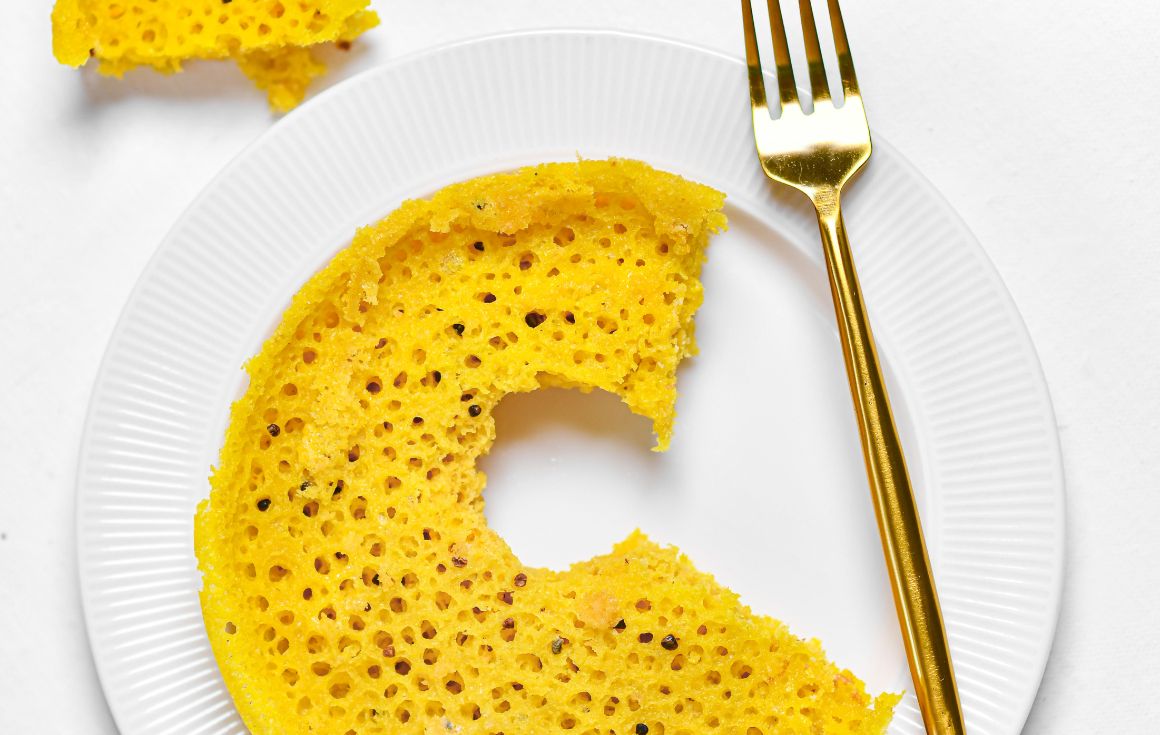Growing up, Ghewar used to be one of my favourite sweet delicacies. My mother and grandmother often used to break their fast on Gangaur and Teej by eating Ghewar.
Ghevar or Ghewar is a traditional sweet known to be a gift to be presented on auspicious occasions, is associated with the Teej Festival in Rajasthan as well as other states such as Haryana, Gujarat, Uttar Pradesh, and Madhya Pradesh. In some places, it is associated with Raksha Bandhan and Sankranti as well.
When we talk about its making, the preparation of Ghewar is very unique and fascinating. It involves frying liquid Maida which is poured into a mold, generally round or hexagonal-shape, layer by layer soaked in sweet syrup, and often garnished with edible silver foil and pistachios.
Even though there is no information on its history, Some people claim that it came to India along with the Mughals many centuries ago or maybe came with the artisans who came from the middle east. A large set of people believe that Ghewar originates from Rajasthan. There is another group of people who believe that Ghewar originated in Uttar Pradesh. The popular opinion is that it is a Rajasthani Mithai. So maybe let’s go with that now!
Ghewar is majorly made sweet and unsweetened. Sweet ghewar has a short lifespan of 3-7 days whereas unsweetened ghewar has a shelf life of 20-30 days. There are many variants of Ghewar famous around the country.
Malai Ghewar is one of the most popular Ghewar types after plain Ghewar. A layer of malai is added on top of ghewar whose soft texture goes well with the semi-crispy texture of Ghewar. Another delicious Ghewar flavor that is enjoyed all over India is dry fruit-loaded Ghewar. The most expensive type of Ghewar is topped with all kinds of dry fruits. Almonds, cashews, pistachios, raisins, and more.
Another type of ghewar comes from Bihari cuisine. This Ghewar looks like a mixture of Jalebi and Ghewar. This mithai is called Gheehar and looks like a large jalebi.
My favorite is Rabdi Ghewar, a thick layer of rabdi is added on top of the ghewar, garnished with dry fruits.
I don’t know about you but I want some ghewar now, after all, it is an amazing delicacy.
No worries! We will just get some from Vijay Dairy. Their Ghewar is freshly made, topped with saffron, silver (vark), and dry fruits, it’s almost like it melts in your mouth.
But if you love making sweets at home, how about I share the Ghewar Recipe I use to make them? This recipe is by Chef Sanjeev Kapoor, I am sure you will love it!
Refined flour (maida) 1 3/4 cups Cornflour/ corn starch 1 tablespoon Ghee 1/4 cup
Sugar 1 cup
Milk 1 tablespoon
Kewra essence a few drops Soda bicarbonate as required Ghee for deep-frying
Silver vark as required Almonds slivered 8
Let’s make it! Method
Step 1
Mix the flour, cornflour, and melted ghee in a bowl. Add one cup of water in a thin stream and whisk continuously so that all the ingredients blend well, and the ghee and water emulsify into a smooth mixture and do not separate.
Step 2
Add two more cups of water in a thin stream and whisk continuously to ensure again that the ghee and water do not separate. The batter should be of coating consistency. If necessary, add some more water to get the right consistency.
Step 3
Keep the batter in a cool place away from heat, but not in a refrigerator.
Step 4
In a non-stick pan, cook the sugar with half a cup of water, stirring till the sugar dissolves. Add the milk. Collect the scum which rises to the surface with a ladle and discard it. Cook till the syrup attains a one-string consistency. Stir in the screw pine essence. Remove from heat and keep warm.
Step 5
Pour sufficient ghee into a non-stick Kadai and place a three-and-a-half-inch round, 2-inch high mold in the center, so that three-fourths of the height of the mold is immersed in the ghee. Heat the ghee on medium heat.
Step 6
Pour three ladlefuls of the batter into a small bowl, add a pinch of soda bicarbonate and mix well. When the ghee is hot enough, pour one ladle of batter into the center of the mold in a thin stream.
Step 7
When the froth settles down, pour another ladle of batter into the mold in a thin stream. Step 8
When the froth settles down, make a hole in the center of the ghewar with a thin wooden skewer or satay stick and pour another ladleful of batter into the hole.
Step 9
Increase the heat and cook the ghewar, ladling the hot ghee over it two to three times.
Step 10
When the center is firm and cooked, gently pull out the ghewar from the mold with a wooden skewer inserted in the center. Hold it over the Kadai till most of the ghee drains away. Immerse in the sugar syrup for twenty minutes. Drain and place on a platter. Decorate with silver foil and almonds. Cool and serve.

